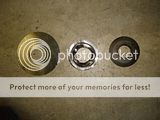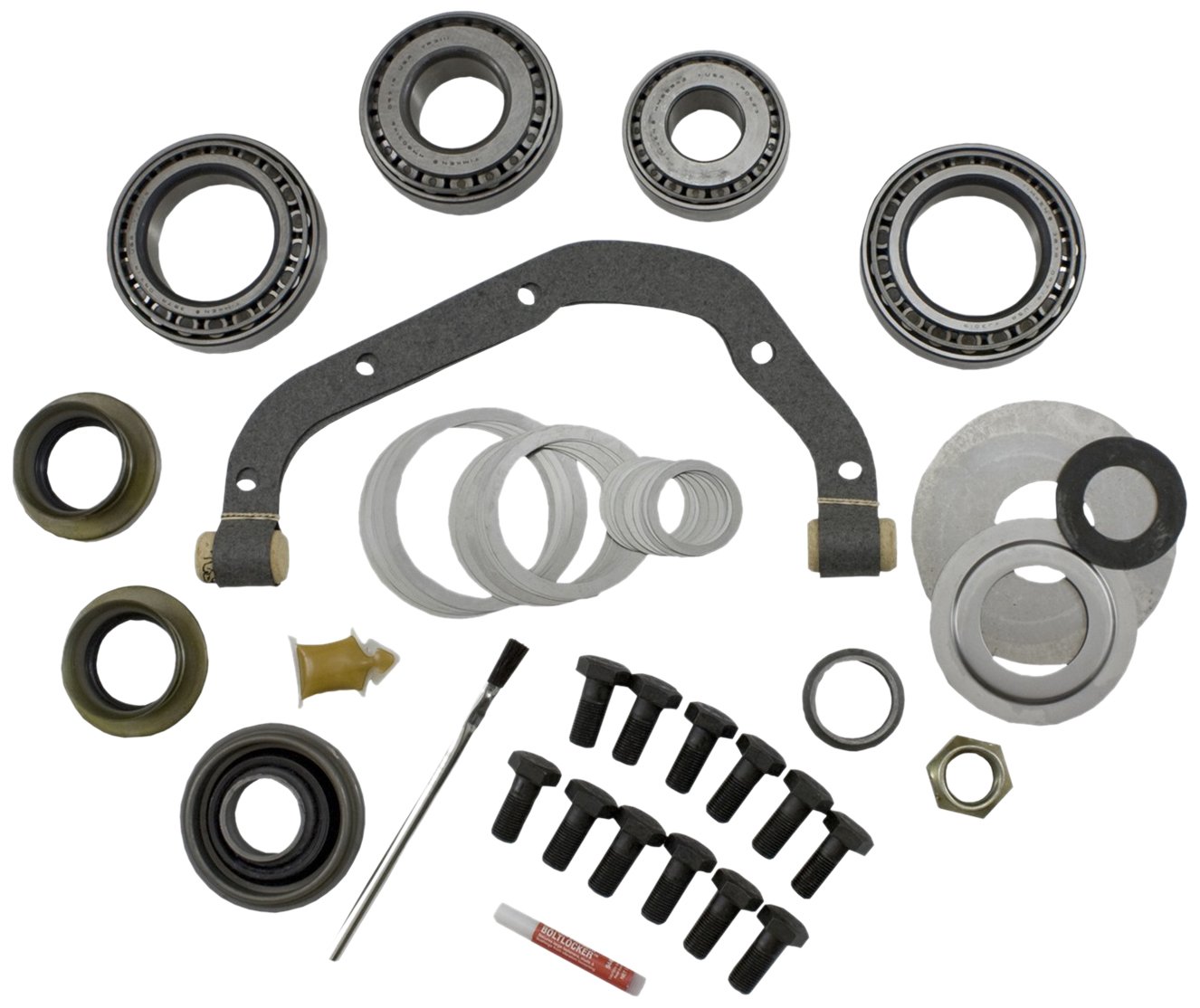You should always have the pinion installed before installing the carrier.
I have a 4lb dead blow and I'll hold the pinion with my hand and then beat the yoke partway on and finally pull it down with the nut. The dead blow will let you get the yoke on far enough. Of course this is after you've set pinion preload and have an acceptable pattern. The yoke and seal are the last things to go on.
There are other things you can do like making a fake yoke with a piece of tubing and a non locking nut. Hone out your old outside pinion bearing with a flapper wheel and use that. for set up.
Watch this, his carrier has runout but you will see how easy he makes this. The whole video is full of shortcuts. The fake yoke is the best one.
 https://www.youtube.com/watch?v=qixdveMbZ9Q&t=10m20s
https://www.youtube.com/watch?v=qixdveMbZ9Q&t=10m20s
Yea, I made setup bearings for the pinion depth setup, though I later realized I didn't need the inner setup bearing as it's just pressed on once and never needs to come off. Also created a setup inner race and outer bearing for ease of setup. The problem was with my final setup. I don't have a bearing press so it took a while to get the inner bearing installed, but the real problem was just the outer bearing. Everything I read says to just stick the pinion in the housing, throw the outer bearing in, and press it in with the yolk/nut, but this is what destroyed the pinion threads. That outer bearing just didn't want to go on.
It eventually went on, but the nut wouldn't come back off proper and destroyed the outer 3-4 pinion threads. I had to grind them off and grind out another 4-5 threads with a dremel to get a new pinion nut on.
For the next setup (my d30hp today) I'll do things a bit different.
1. Make a setup inner race and outer pinion bearing.
2. Press on inner pinion bearing and outer race.
3. Get my shim stack and backlash dialed in.
4. Press in new inner race.
5. Throw the pinion in the freezer for a few hours, and heat up the outer bearing in the oven.
6. Throw pinion back in the case and the outer bearing should just slide on.
The only problem I have with this plan is putting the outer bearing on the pinion while hot. I won't get an accurate backlash/depth reading until the two parts equalize in temp, so i'd have to let them sit for a few hours, but once they're equalized, that outer bearing may be on there really good and I'll undoubtably have to remove it again for a few more setups.
Should I just hone out the inner race of the outer bearing enough that it'll go on snug but neither loose nor tight?








